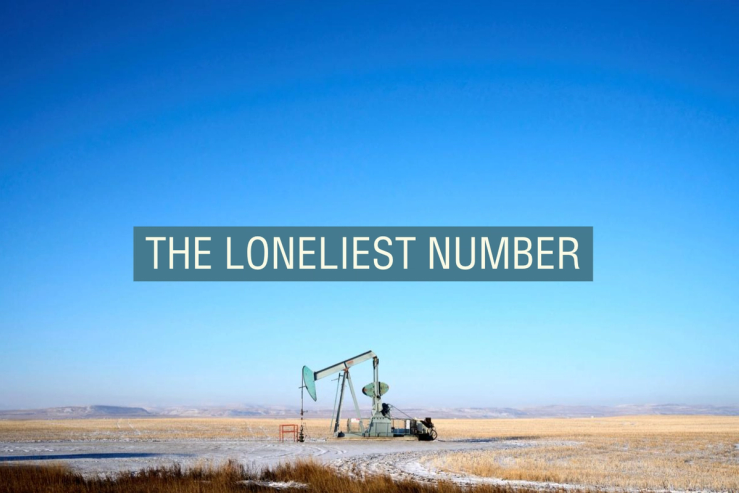The News
US President Donald Trump’s last-minute postponement of tariffs on Mexico and Canada have averted a trade war — for now — but his threats have also revealed just how difficult it would be for the country to function as an energy island.
Trump pushed off economy-wide tariffs on Mexico and Canada at the eleventh hour, after both agreed to curb the flow of migrants and drugs into the US. The 10% tariff threat on Canadian energy products was poised to be especially painful for energy companies and consumers on both sides of the border, driving up the prices of gasoline and electricity with little potential upside for Big Oil in terms of incentivizing more US drilling. And though that particular threat is on hold, the US did move ahead with new tariffs on China, which quickly countered with its own tariffs on American oil and gas. Trump also continues to threaten Europe, which has become a key market for US natural gas.
Tim’s view
For Trump, tariffs are mainly a tool for extracting political concessions, disconnected from specific trade disputes or imbalances: Tariffs might induce some “short term pain” for US consumers, he warned this week, but that would eventually be offset by boosted domestic production. The trouble is that energy, more so than other products, is bound by physical constraints that can’t be reengineered, making Trump’s trade aggression antithetical to his key campaign promises. Natural resources are in the ground where they are, and trade between countries is a prerequisite for anyone to have reliable, affordable access to energy — fossil, renewable, or otherwise. Energy “independence” has always been both illusory and counterproductive. The threat of energy tariffs may have worked on Canada for now, but their deeply self-destructive nature weakens their effectiveness as a negotiating tool, and raises the likelihood that other leaders will start to call Trump’s bluff more often.
The US and Canadian oil markets have been deeply linked since the post-World War II period, to the point that “if you’re just looking at energy flows, you may not be able really tell that these are two separate countries,” said Jim Burkhard, vice president and head of research for oil markets at S&P Global. The system has served both sides well, with US refineries taking in heavier crude that didn’t have a market in Canada. Energy trade is also broadly foundational to the countries’ mostly-good relations: Countries that are invested in each others’ energy sectors have a deep interest in their mutual security and stability.
The cost of reengineering a typical US refinery to accept different mixes of crude would run into the hundreds of millions of dollars, said University of Houston energy economist Ed Hirs, an investment that the industry and its Wall Street backers have no interest in making as US and global gasoline demand peaks. The higher price of importing the usual Canadian barrels would get passed to US drivers. And while restricting the flow of crude from Canada and Mexico could nudge oil prices upward, it wouldn’t be enough to drive higher US drilling, Burkhard and Hirs agreed. As US oil executives have tried to convince Trump with increasing urgency, the outcome is a lose-lose for everyone involved — except OPEC, nemesis of US oil producers, which could seize on the opportunity to roll back the painful production cuts it has been clinging to since the pandemic.
As for greener energy: Critical mineral deposits, and hotspots for renewable power production, are also widely disbursed around the globe, meaning no energy transition is possible without substantial trade, said Trevor Sutton, director of Columbia University’s Program on Trade and the Clean Energy Transition. Canada is a key supplier of cheap, zero-carbon hydropower to the US, as well as a producer of electric vehicle components. But the irony of Trump’s tariff threat, Sutton said, is that driving up the cost of fossil energy in the US would only improve the economics of clean alternatives: “It’s possible Trump could end up hastening the green transition.”
The View From Europe
Trump’s next target is Europe, where he plans to use the threat of tariffs to extract commitments to buy more US LNG. But as with Canada, tariffs targeting Europe would be counterproductive for Trump’s energy aims; weaker economies buy less gas, and especially with China raising barriers, US LNG exporters can’t afford to lose the European market. France and Germany are already pushing their peer countries not to acquiesce to Trump.
In the meantime, US tariffs on China could help Europe’s energy transition, said John Diklev, founder of the Swedish battery storage startup Flower. Chinese manufacturers of batteries and solar panels are already overproducing; losing more of the US market could induce them to cut prices in Europe.
Room for Disagreement
If any country is capable of making a stab at genuine energy independence, it’s the US. But the fastest way there, Sutton said, isn’t through drilling more oil and gas: It’s by accelerating the buildout of renewables, which rely on global supply chains for their construction but, later, are able to operate independent of trade.
Notable
- Tesla is pressuring the Trump administration to exempt graphite from Chinese import tariffs, a sign that Trump’s trade wars could undermine his relationship with Elon Musk just as they’ve already raised the hackles of his supporters in the oil industry.
- EVs are at risk from the Canada and Mexico tariffs, but are less exposed than gas-engine cars, Heatmap reported, because EVs have fewer parts altogether.


